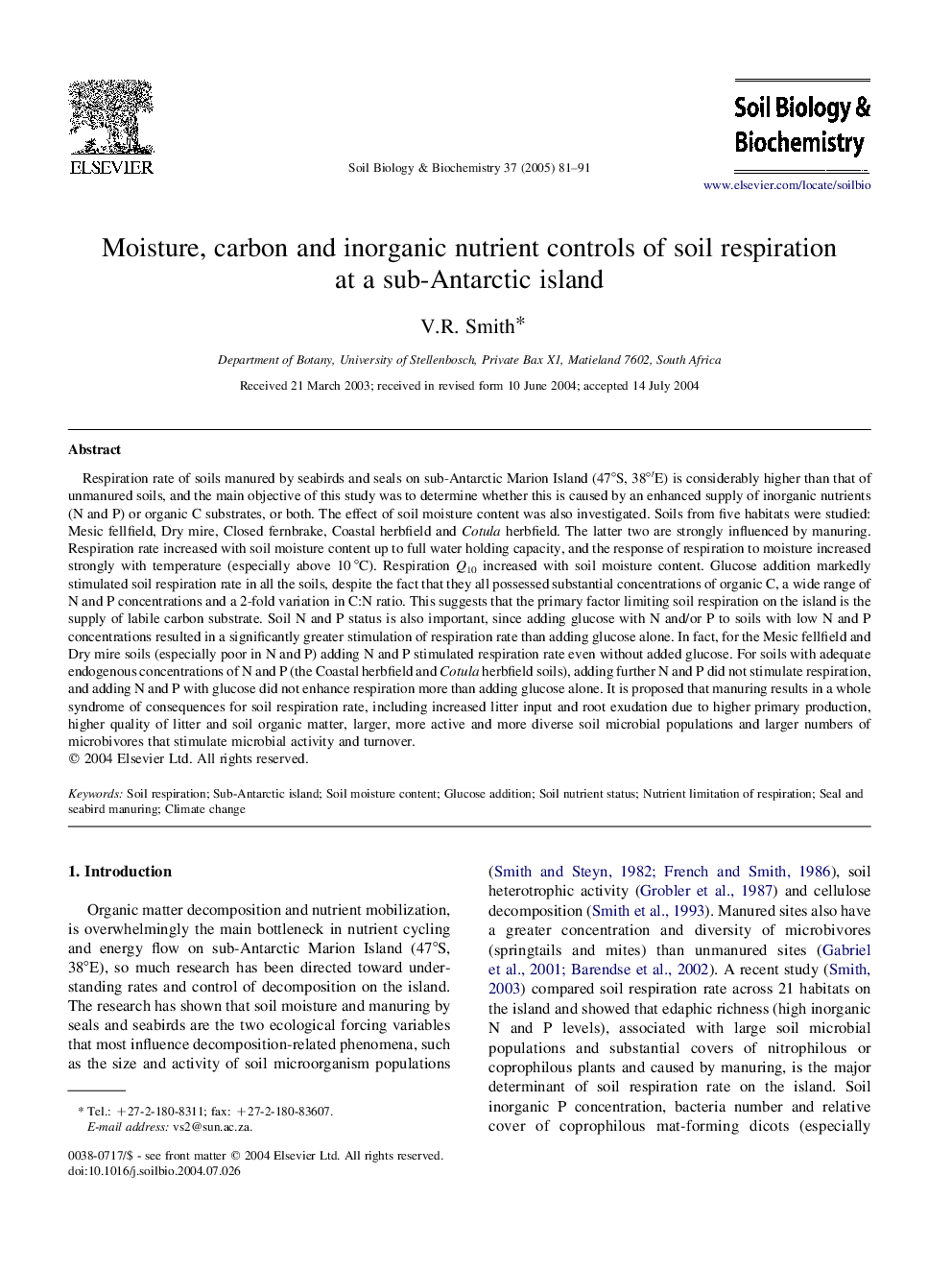| کد مقاله | کد نشریه | سال انتشار | مقاله انگلیسی | نسخه تمام متن |
|---|---|---|---|---|
| 10846429 | 1070055 | 2005 | 11 صفحه PDF | دانلود رایگان |
عنوان انگلیسی مقاله ISI
Moisture, carbon and inorganic nutrient controls of soil respiration at a sub-Antarctic island
دانلود مقاله + سفارش ترجمه
دانلود مقاله ISI انگلیسی
رایگان برای ایرانیان
کلمات کلیدی
موضوعات مرتبط
علوم زیستی و بیوفناوری
علوم کشاورزی و بیولوژیک
دانش خاک شناسی
پیش نمایش صفحه اول مقاله

چکیده انگلیسی
Respiration rate of soils manured by seabirds and seals on sub-Antarctic Marion Island (47°S, 38°â²E) is considerably higher than that of unmanured soils, and the main objective of this study was to determine whether this is caused by an enhanced supply of inorganic nutrients (N and P) or organic C substrates, or both. The effect of soil moisture content was also investigated. Soils from five habitats were studied: Mesic fellfield, Dry mire, Closed fernbrake, Coastal herbfield and Cotula herbfield. The latter two are strongly influenced by manuring. Respiration rate increased with soil moisture content up to full water holding capacity, and the response of respiration to moisture increased strongly with temperature (especially above 10 °C). Respiration Q10 increased with soil moisture content. Glucose addition markedly stimulated soil respiration rate in all the soils, despite the fact that they all possessed substantial concentrations of organic C, a wide range of N and P concentrations and a 2-fold variation in C:N ratio. This suggests that the primary factor limiting soil respiration on the island is the supply of labile carbon substrate. Soil N and P status is also important, since adding glucose with N and/or P to soils with low N and P concentrations resulted in a significantly greater stimulation of respiration rate than adding glucose alone. In fact, for the Mesic fellfield and Dry mire soils (especially poor in N and P) adding N and P stimulated respiration rate even without added glucose. For soils with adequate endogenous concentrations of N and P (the Coastal herbfield and Cotula herbfield soils), adding further N and P did not stimulate respiration, and adding N and P with glucose did not enhance respiration more than adding glucose alone. It is proposed that manuring results in a whole syndrome of consequences for soil respiration rate, including increased litter input and root exudation due to higher primary production, higher quality of litter and soil organic matter, larger, more active and more diverse soil microbial populations and larger numbers of microbivores that stimulate microbial activity and turnover.
ناشر
Database: Elsevier - ScienceDirect (ساینس دایرکت)
Journal: Soil Biology and Biochemistry - Volume 37, Issue 1, January 2005, Pages 81-91
Journal: Soil Biology and Biochemistry - Volume 37, Issue 1, January 2005, Pages 81-91
نویسندگان
V.R. Smith,